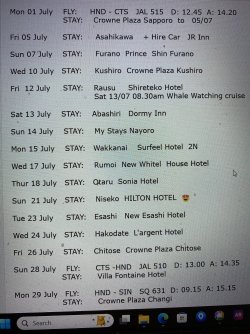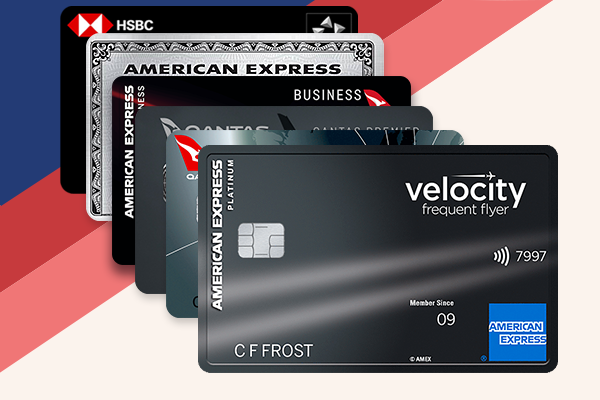Ooh I have lots of information to share with you
@RooFlyer ! And happy for a private conversation as well if you want.
Smoking v non-smoking
If it says smoking, it will be - disgusting. If it says non-smoking, it will be, although as noted upthread by
@elanshin, sometimes the non-smoking rooms still have a residual smell of smoke. If it does not say, probably it is non-smoking, but I personally would not take the chance on it until I had checked with the hotel. Smoking is still much more prevalent in Japan than here, and it is really noticeable.
That said, a couple of years back, Japan started to tighten up on smoking in public places and it is substantially better than it was. Many cities have now declared key areas of CBD, parks, rail stations etc as permanent non-smoking zones and proved the "smoking room" cabins for people to use. Most restaurants are now non-smoking - although some still have a smoking section (and so the whole place stinks). And in Beppu, there was a disturbing number of izakaya style eateries that advertised "smoking permitted" as if that was a draw card rather than a turn off. A few were mystified when I checked, in Japanese, was told smoking was OK, and so promptly left

.
Car rental
Depending where you want to go (and there are some places that are definitely hard to get to by public transport), a car can be a bit of an embuggerance - there are lots of toll roads, lots of traffic, it can be quite a challenge to find parking in bigger cities (although it's not too expensive, to my surprise - often only about ¥600 for 30 minutes during the day and a bit less overnight. Many city hotels do not have their own car park and you may or may not get a discount at a "partner" commercial parking station. And I confirm you absolutely need the IDP without fail to rent. Plus it
MUST be the paper (cardboard) one as they do not accept digital versions (accurate family personal experience from February 2024).
Web sites
Some hotels and attractions do have a language button so you can read their site in English. But, even with my limited Japanese, I have become aware that they don;t really update that English copy as frequently as they update the Japanese. So the English versions, many still have really detailed COVID information that is no longer on the JP sites, some pricing and date info is out of date etc. If I want to translate parts of a site, I just plug it into Google translate - but caveat emptor - Google translate is pretty good, until it isn't

.
Hotel Bookings
I'm another one voting for the aggregators for bookings in Japan. For example, I am a "loyalty member" of the Prince Seibu Club (a popular chain of hotels in Japan) and I have NEVER been able to get as good a deal, even for a member rate, at any Prince property, as I can get through booking.com. I don't love using them, but money talks. I almost always select the "pay later" option to pay at the hotel and thus avoid some of the scams people have mentioned on here in other threads. You can also save or print your confirmation in both english and Japanese, which helps if you need to get a taxi, for filling in your Visit Japan Web arrival paperwork, and just in case the reception staff do not speak/read English (generally unlikely, but can sometimes happen).
Dormy Inn
I agree with
@rbjhan - we love a Dormy Inn, and also have stayed at one of their very upmarket Onyado Nono brand (think tatami mats everywhere and traditional music over the public systems, lovely onsens etc). Dormy Inn is a good chain, with predictable (good) quality accommodation, great breakfast (I've always found it cheaper to include in the booking on booking.com than to pay at the hotel), nice free onsens, and a bunch of lovely other little freebies - coffee, tea and soft drink free all day, free icecreams for after the onsen, free night ramen from 2130, and they almost always have a guest laundry - sometimes free, sometimes priced at around ¥300 per load.
The beds are normal to slightly firm, as are the pillows (Japanese pillows often have a buckwheat fill on one side, and "normal" on the other). They often have a sensor light in the entry foyer/bathroom foyer which is annoying when it turns on and blinds you as you run to the loo in the middle of the night. Mr Seat 0A always Macguyvers that with a post it note over the sensor

. They supply shampoo, conditioner and body wash, and all your onsen requirements are in the room or at the onsen. But BYO body lotion if you need it. They also supply a yukata or PJs and slippers in every room. The rooms have a small fridge you can store milk, yoghurt, alcohol, fruit etc, and they supply tea and coffee (but never milk) and a kettle in the rooms. The tea in the rooms is not the same as standard Liptons or Dilmah, so I usually take a few tea bags with me, and buy milk at the nearest Konbini (which is never more than 100m away). Although the breakfast tea is usually fine
 JR Pass
JR Pass
With the recent price hike, I don't think the JR Pass will be value for you for the trips you mentioned, but as
@elanshin suggested, plug your trips into the calculator and see. You
can now use the Nozomi trains on the JR Pass (previously you could not), but you have to pay a supplement to do so. This varies by route and distance - coming up soon in my (delayed) TR is some info about that - we looked into it for Nagoya to Nagasaki and it was to be ¥6800 per person supplement (in Green class). So we took the slower Hikari and were very satisfied. The difference between Hikari and Nozomi in terms of time on say Tokyo-Osaka is that the Hikari is about 20-30 mins slower over that route. Not because the train is itself slower, but because it makes more stops. And the same applies to the Kodama - they also travel at about the same speed, but make even more stops than the Hikari.
If you travel in Green Class, you are
required to have a seat reservation, which is free and can be done on a machine at the station (has an English language option for you to select) or at a JR service centre which can be found at most of the major stations. Nagoya certainly has one, we used it and left with a fist full of tickets (coming soon in TR).
If you travel in ordinary class, you are
not required to have a reservation, but you may prefer to. Each shinkansen has 3 carriages that are unreserved seating. This is fine if you are getting on board at an early station along the route, and you line up on the platform early so that you are amongst the first to board, but at busy times, people do miss out and there is nothing to be done at that point other than choose to stand for the whole trip, or get off and get another train or make a seat reservation. That's why a lot of people still book a seat, even though unreserved seats are possible.
Luggage on the Shinkansen
On the routes you mentioned travelling, you are required to have a "large luggage booking" if the three dimensions of your bag added together exceed 160cm. These bookings are free, but are a limiting factor as there are just not that many seats available to suit large luggage. As a guide, carry on size bags are well under the limit, and so are most "medium sized" checked bags (sold here in the range of 58-63cm, give or take a bit). By the time you get to a 68-71cm bag (the big ones), you will likely blow the 160cm limit. We did not book large luggage for any of our train trips this tour. Our medium sized "checked bags" fitted just fine on the luggage racks on all trains except one in regional Kyushu that had airline style "lockers" instead of open rack.
BUT - you have to be able to lift it overhead - that's why I go to the gym so the "15-20kg overhead suitcase press to luggage rack" is something I can manage. Mr Seat 0A always offers to help, and I mainly let him, but hey, a girl has to be a bit independent and strong sometimes, am I right!!
Or you can use luggage forwarding (yamato/kuroneko is the most well known) - although that may not suit for such a short trip as you need to allow time for the luggage to be moved from place to place. Cost is about ¥2000- ¥2500 per piece depending on size and weight. It really works. We always send our ski gear straight to the airport when we finish skiing and travel much lighter for the rest of the trip.
Shin Osaka Station
Just note that Shin Osaka station is not at the main JR station like most other Shin stations are, and so you will need to catch another train to get to most places you will want to go in Osaka. Not a problem, just catches some people by surprise when they arrive and it's not where they thought they were. You might also think about whether you want to get a hotel that is walking distance to Shin Osaka and then catch a short connecting train (from memory about 10 min ride, and trains are very frequent) when you want to visit attractions etc, or if you want to stay close to the action of the city (we stayed around Namba area, and it was a great location) and have to connect to the station to catch any shinkansens (including to Himeji)
I'm just off to do a few errands now, but will post again with more details later today/tomorrow about Suica/ Passmo and other really good options for your transport requirements, and also some comments about things to do in those places you mentioned above.






























